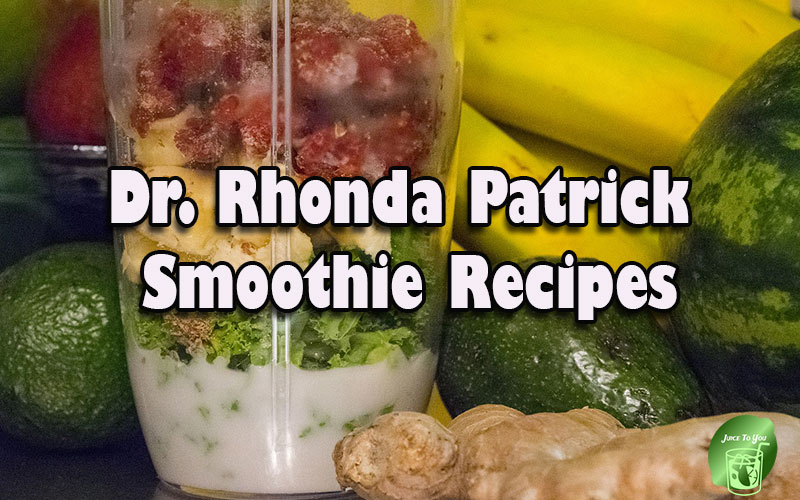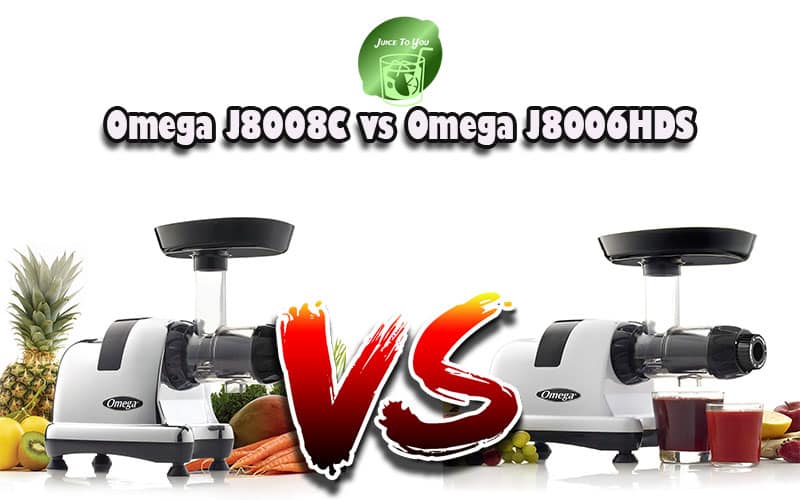Today, we want to share with you the secret to unlocking the full potential of wheatgrass – the best way to juice it! As health enthusiasts, we are always on the lookout for ways to nourish our bodies naturally, and wheatgrass has undoubtedly caught our attention. From its abundant nutrients to its potential health benefits, this vibrant green superfood has become a popular addition to many health-conscious routines. But with so many juicing methods out there, which one truly reigns supreme when it comes to extracting the maximum goodness from wheatgrass? Join us as we uncover the answer and discover a juicing technique that will leave you feeling invigorated and refreshed.
Review contents
Choosing the Right Wheatgrass
Selecting Fresh and Organic Wheatgrass
When it comes to choosing the right wheatgrass, freshness and organic quality are paramount. Fresh wheatgrass ensures that you are getting the maximum nutrients and enzymes available, as opposed to wilted or slightly spoiled wheatgrass. Look for vibrant green color and firmness in the blades of wheatgrass. Organic wheatgrass is grown without the use of synthetic fertilizers or pesticides, ensuring that you are not consuming any harmful chemicals along with your juice.
Determining the Ideal Age of Wheatgrass
The age of the wheatgrass is another factor to consider when selecting the best wheatgrass for juicing. Wheatgrass is typically ready for juicing around 7-10 days after germination. At this stage, it has reached its peak nutritional value, with a concentrated amount of vitamins, minerals, and chlorophyll. Avoid wheatgrass that is too young or too mature, as it may not have the same nutrient density.
Considerations for Growing Your Own Wheatgrass
Growing your own wheatgrass can be a rewarding and cost-effective option for obtaining fresh wheatgrass for juicing. You have control over the growing conditions and can ensure that it is grown organically. To grow wheatgrass at home, you will need wheatgrass seeds, a seed tray or shallow container, organic soil, and access to natural light. Make sure to provide proper moisture and temperature conditions for optimal growth. Growing your own wheatgrass allows you to harvest it at the ideal age for juicing, ensuring maximum nutritional benefits.
Preparing Wheatgrass for Juicing
Trimming and Washing the Wheatgrass
Before juicing wheatgrass, it is important to trim off any dead or brown tips of the blades. This ensures that you are only juicing the fresh and healthy parts of the plant. Next, thoroughly wash the wheatgrass to remove any dirt or debris. This can be done by gently rinsing it under cool running water or soaking it briefly in diluted apple cider vinegar or hydrogen peroxide solution. Properly cleaning the wheatgrass promotes hygiene and removes any potential contaminants.
Allowing Wheatgrass to Soak
Once the wheatgrass is trimmed and washed, it’s beneficial to allow it to soak in water for a few minutes. This helps to hydrate the blades and make them juicier. Soaking also softens the fibers, which makes it easier to extract the juice during the juicing process. After soaking, drain the water and gently pat the wheatgrass dry using a clean towel or paper towels. It is now ready for the juicing process.
Drying Wheatgrass Properly
After washing and soaking, it is crucial to dry the wheatgrass before juicing to remove excess moisture. This step is important because excess moisture can dilute the juice and affect its taste and quality. To dry the wheatgrass, spread it out evenly on a clean towel or paper towels. Allow it to air dry for about 15-20 minutes or until it is completely dry. Once dry, the wheatgrass is ready to be juiced.
Different Methods for Juicing Wheatgrass
Using a Manual Wheatgrass Juicer
A manual wheatgrass juicer is a popular option for those who want a simple and cost-effective way to juice wheatgrass. This type of juicer operates by manually cranking a handle to extract the juice from the wheatgrass blades. Manual juicers are typically compact and easy to use, making them suitable for home juicing. They are also quiet and do not require electricity, which can be advantageous for those in noise-sensitive environments.
Using an Electric Juicer
Electric juicers, such as masticating or centrifugal juicers, are another option for juicing wheatgrass. These juicers use motorized mechanisms to extract the juice quickly and efficiently. Centrifugal juicers work by spinning the wheatgrass at high speeds to separate the juice from the pulp. On the other hand, masticating juicers use a slow grinding and pressing action to extract the juice. Electric juicers are faster and more convenient compared to manual juicers, especially when juicing large quantities of wheatgrass.
Blending Wheatgrass in a High-Speed Blender
If you don’t have a specialized wheatgrass juicer, you can still juice wheatgrass by blending it in a high-speed blender. Simply add a small amount of water or your preferred liquid to the blender along with the washed and dried wheatgrass. Blend on high speed for about 1-2 minutes or until the wheatgrass is thoroughly pulverized. Once blended, you can strain the mixture through a fine-mesh sieve or nut milk bag to separate the juice from the pulp.
Juicing with a Masticating Juicer
A masticating juicer is a versatile option for juicing wheatgrass and other fruits and vegetables. This type of juicer uses a slow, grinding motion to extract the juice without generating heat. Masticating juicers are known for producing high-quality juice with minimal oxidation and nutrient loss. When juicing wheatgrass with a masticating juicer, ensure that you feed the wheatgrass slowly and evenly to maximize juice extraction.
The Option of Wheatgrass Powder
For added convenience, wheatgrass powder is also available as an alternative to juicing fresh wheatgrass. Wheatgrass powder is made by dehydrating and grinding fresh wheatgrass into a fine powder form. It retains many of the nutritional benefits of fresh wheatgrass and can be easily mixed with water or added to smoothies and other recipes. Wheatgrass powder is a convenient option for those who may not have access to fresh wheatgrass or prefer a longer shelf life.
Tips for Efficient Wheatgrass Juicing
Cutting Wheatgrass into Smaller Pieces
To ensure the most efficient juicing process, it is helpful to cut the wheatgrass into smaller pieces before juicing. This allows the juicer or blender to extract the juice more effectively. Use a sharp knife or kitchen scissors to cut the wheatgrass into 1-2 inch pieces. This will make the juicing process quicker and result in a higher yield of juice.
Alternate Wheatgrass with Other Juicy Ingredients
For those who find the taste of wheatgrass too strong, consider alternating the juicing of wheatgrass with other juicy ingredients. Adding cucumber, celery, or apple to your wheatgrass juice can help mellow out the flavor and make it more palatable. This combination provides additional nutrients and adds variety to your juicing routine.
Juicing Wheatgrass Along with Other Vegetables
Incorporating wheatgrass into a vegetable juice blend is another option for efficient juicing. By combining wheatgrass with other vegetables like spinach, kale, or carrots, you can create a nutrient-packed green juice that offers a wide range of health benefits. Experiment with different vegetable combinations to find the flavors that you enjoy the most.
Experimenting with Different Combinations
Don’t be afraid to experiment with different combinations of ingredients when juicing wheatgrass. Whether you prefer a sweeter juice with fruits or a more savory blend with vegetables, try different combinations to find your personal favorite. You can also add herbs and spices like ginger or mint to enhance the flavor profile of your wheatgrass juice.
Stirring or Shaking the Juice for Consistency
After juicing wheatgrass, it is common for the juice to separate into layers, with the foam floating on top. To ensure a consistent and well-mixed juice, give it a good stir or shake before consuming. This will distribute the nutrients and flavors more evenly throughout the juice.
Enjoying Wheatgrass Juice on an Empty Stomach
For optimal absorption and digestion, it is recommended to consume wheatgrass juice on an empty stomach. Drinking it first thing in the morning before eating any solid food allows the nutrients to be absorbed more readily into the bloodstream. However, if you experience any discomfort or nausea when consuming wheatgrass juice on an empty stomach, it is best to consume it with a small meal or snack.
Storing and Preserving Wheatgrass Juice
Using Refrigeration to Extend Shelf Life
Freshly juiced wheatgrass is best consumed immediately to maximize its nutritional benefits. However, if you have leftover juice, you can store it in the refrigerator to extend its shelf life. Transfer the juice to an airtight container and refrigerate for up to 48-72 hours. Keep in mind that the longer the juice is stored, the more nutrient loss may occur. It is always best to consume wheatgrass juice as soon as possible after juicing for the highest nutrient content.
Freezing Wheatgrass Juice
If you have a surplus of wheatgrass juice or want to prepare in advance, freezing the juice is an option. To freeze wheatgrass juice, pour it into ice cube trays or freezer-safe containers. Leave about half an inch of space at the top of each container to allow for expansion during freezing. Once frozen, transfer the cubes or containers to a freezer bag for easy storage. Frozen wheatgrass juice can be kept for up to 6 months. Thaw the juice in the refrigerator before consuming.
Adding Lemon Juice for Preservation
To extend the shelf life of wheatgrass juice, you can add a small amount of freshly squeezed lemon juice. Lemon juice acts as a natural preservative and helps prevent the growth of bacteria and spoilage. Add about half a teaspoon of lemon juice to each serving of wheatgrass juice before refrigerating or freezing. This addition not only helps preserve the juice but also adds a refreshing citrus flavor.
Utilizing Vacuum Sealing Techniques
For those looking for longer-term preservation options, vacuum sealing can help retain the freshness of wheatgrass juice. Vacuum sealing removes the air from the container, preventing oxidation and reducing bacterial growth. Transfer freshly juiced wheatgrass into vacuum seal bags or containers, and use a vacuum sealer to remove the air and create an airtight seal. Properly sealed wheatgrass juice can be stored in the refrigerator or freezer for an extended period, without sacrificing its nutritional value.
Health Benefits of Wheatgrass Juice
Rich in Essential Nutrients
Wheatgrass juice is a concentrated source of essential nutrients, including vitamins, minerals, and antioxidants. It contains vitamins A, C, and E, as well as important minerals like iron, calcium, and magnesium. These nutrients play a vital role in supporting overall health and wellbeing.
Strong Detoxification Properties
Wheatgrass juice is known for its detoxification properties, helping to cleanse the body of toxins and harmful substances. It contains chlorophyll, a natural detoxifier that helps remove heavy metals and other toxins from the bloodstream. Regular consumption of wheatgrass juice can support liver function and aid in the body’s natural detoxification processes.
Boosts Immune System
The rich nutrient content in wheatgrass juice is known to support and strengthen the immune system. It provides a natural boost to the body’s defense mechanisms, helping to ward off infections and illnesses. The vitamins and antioxidants present in wheatgrass juice help protect cells from damage and promote a healthy immune response.
Alkalizing and Balancing pH Levels
Wheatgrass juice has an alkalizing effect on the body, helping to balance pH levels and reduce acidity. High acidity in the body can contribute to various health issues, such as inflammation and digestive problems. Regular consumption of wheatgrass juice can help restore the body’s pH balance and promote overall wellbeing.
Promotes Healthy Digestion
The enzymes present in wheatgrass juice aid in digestion and can help alleviate digestive issues such as constipation and bloating. Wheatgrass juice contains an enzyme called Superoxide Dismutase (SOD) that supports digestion and helps to break down food more efficiently.
Provides Natural Energy
Wheatgrass juice is a natural energy booster, offering a healthy alternative to caffeine or sugary energy drinks. The combination of vitamins, minerals, and chlorophyll provides a sustained energy boost without the crash or jitters that can come with artificial stimulants. Consuming wheatgrass juice in the morning can help improve focus and provide a natural pick-me-up throughout the day.
Potential Side Effects and Precautions
Allergic Reactions to Wheatgrass
Although rare, some individuals may have allergies to wheat or grass pollen, which can cause allergic reactions when consuming wheatgrass juice. If you have a known allergy to wheat or grass, it is best to avoid wheatgrass juice or consult with a healthcare professional before consuming it.
Contamination Risks
Wheatgrass, like any raw produce, can carry bacteria or contaminants if not properly handled or grown in unsanitary conditions. It is important to choose fresh and organic wheatgrass from reputable sources and practice proper cleaning and hygiene when juicing at home. Washing the wheatgrass thoroughly and using clean preparation and juicing equipment can help minimize the risk of contamination.
Possible Interference with Medications
Wheatgrass juice may interact with certain medications, especially those metabolized by the liver. If you are taking medications, it is advisable to consult with a healthcare professional before incorporating wheatgrass juice into your routine. They can provide guidance on potential interactions and ensure it is safe for your specific situation.
Overconsumption and Digestive Issues
While wheatgrass juice offers numerous health benefits, it is important to consume it in moderation. Starting with small amounts and gradually increasing the intake allows your body to adapt and avoid potential digestive issues. Some individuals may experience nausea, diarrhea, or other digestive discomfort if they consume large amounts of wheatgrass juice too quickly. Pay attention to your body’s response and adjust your intake accordingly.
Understanding Wheatgrass Juicing Dosage
Recommended Daily Intake
The recommended daily intake of wheatgrass juice varies depending on individual needs and health goals. As a general guideline, start with 1-2 ounces of wheatgrass juice per day and gradually increase the amount if desired. Listening to your body and assessing how you feel after consuming wheatgrass juice can help determine the most suitable dosage for you.
Gradual Increase in Consumption
When incorporating wheatgrass juice into your diet, it is advisable to start with a small amount and gradually increase the consumption. This allows your body to adjust and minimize any potential side effects. Starting with a few ounces per day and gradually increasing to the desired amount over a week or two is a recommended approach.
Listening to Your Body
Every individual is unique, and it is important to listen to your body’s response when consuming wheatgrass juice. Pay attention to any changes in digestion, energy levels, or overall well-being. If you notice any adverse effects, reduce the amount of wheatgrass juice or discontinue use. It is always best to consult with a healthcare professional if you have any concerns or questions.
Consulting a Healthcare Professional
If you have underlying health conditions, are pregnant, or breastfeeding, it is advisable to consult with a healthcare professional before incorporating wheatgrass juice into your diet. They can provide personalized advice and ensure that it is safe for your specific health situation.
Alternative Uses for Wheatgrass
Wheatgrass Shots and Supplements
For those who do not prefer the taste of wheatgrass juice, wheatgrass shots or supplements are available as an alternative. These concentrated forms of wheatgrass offer a convenient way to obtain the benefits of wheatgrass without having to juice it at home. Wheatgrass shots are generally taken in small quantities, providing a quick and concentrated dose of nutrients.
Incorporating Wheatgrass into Recipes
Wheatgrass can be a versatile ingredient that adds a nutritional boost to various recipes. Add a small amount of wheatgrass juice or powder to your favorite smoothie, salad dressing, or soup for an extra dose of vitamins and minerals. It can also be used in baking recipes, such as muffins or energy bars, to enhance the nutritional content.
Wheatgrass Skin Care and Hair Products
The benefits of wheatgrass extend beyond internal health. Due to its antioxidant and rejuvenating properties, wheatgrass is also used in skincare and hair care products. Look for natural beauty products that contain wheatgrass extract or wheatgrass oil for added nourishment and vitality.
Wheatgrass for Pet Health
Wheatgrass can also benefit the health of your furry friends. Many pet owners grow wheatgrass at home as a safe and nutritious treat for their pets. Cats, in particular, are known to enjoy nibbling on wheatgrass, which can help aid their digestion and provide essential nutrients. However, it is important to consult with a veterinarian to ensure that wheatgrass is safe for your specific pet.
Conclusion
Choosing the best way to juice wheatgrass ultimately comes down to personal preference, convenience, and health goals. Whether you opt for a manual or electric juicer, blending, or using wheatgrass powder, the key is to ensure freshness, proper preparation, and enjoy it in a way that suits your lifestyle. By experimenting with different juicing methods, considering individual health goals, and recognizing personal preferences, you can find the best way to incorporate wheatgrass juice into your daily routine and reap its numerous health benefits.





































